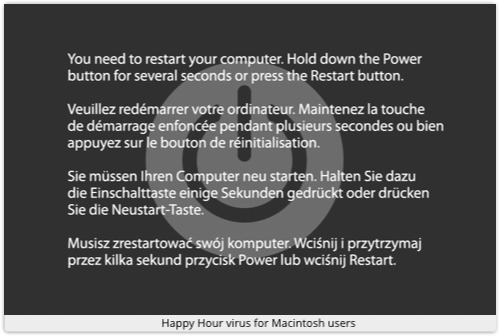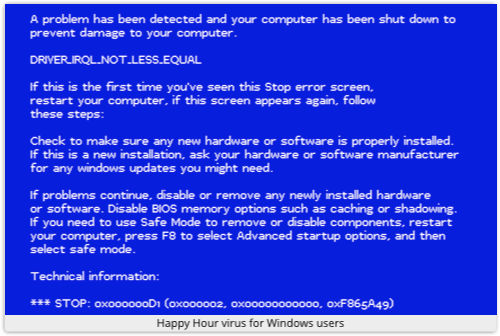5 ways to reduce advertising network latency
Tons of internet traffic is being deliberately diverted through locations including Belarus and Iceland, and intercepted by crooks or worse, security experts fear.
Network intelligence firm Renesys warns that victims including financial institutions, VoIP providers, and governments have been targeted by the man-in-the-middle attacks. It reckons the diversions are malicious, and probably pulled off by manipulating BGP routing tables.
BGP (Border Gateway Protocol) is a core routing protocol that maps out the connections for internet traffic to flow through, from source to destination. As things stand, BGP has no built-in security. Routers may accept dodgy connection routes advertised by peers, internet exchanges or transit suppliers.
These suspect routes, once accepted, can have local, regional or global effects. Routers look for the shortest logical path (the least number of hops, in other words) and place blind trust in any path that’s advertised. And the shortest logical path can take weird and wonderful physical geographical routes.
In 2008, changes by Pakistan Telecom intended to restrict access to YouTube solely within the country had the affect of briefly diverting ALL YouTube traffic into a global blackhole, rendering the site unreachable for hours. Two years later, China Telecom rerouted up to 15 per cent of the world’s internet destinations on two brief occasions, after advertising false BGP route information that directed traffic through its networks.
The Pakistan YouTube hijack was accidental, but security researchers have since demonstrated how the same techniques might be used to highjack or otherwise interfere with internet traffic. Renesys reckons this is just what’s been happening in cases it has monitored this year:
For years, we’ve observed that there was potential for someone to weaponize the classic Pakistan-and-YouTube-style route hijack. Why settle for simple denial of service, when you can instead steal a victim’s traffic, take a few milliseconds to inspect or modify it, and then pass it along to the intended recipient?
This year, that potential has become reality. We have actually observed live Man-In-the-Middle (MITM) hijacks on more than 60 days so far this year. About 1,500 individual IP blocks have been hijacked, in events lasting from minutes to days, by attackers working from various countries.
Done correctly, such an attack would be undetectable to a casual inspection and was even avoid introducing noticeable latency in a connection. But Renesys is monitoring BGP connections in real time from multiple locations worldwide and this monitoring has flagged up some highly suspicious and as yet unexplained behaviors that started in February:
In February 2013, we observed a sequence of events, lasting from just a few minutes to several hours in duration, in which global traffic was redirected to Belarusian ISP GlobalOneBel. These redirections took place on an almost daily basis throughout February, with the set of victim networks changing daily. Victims whose traffic was diverted varied by day, and included major financial institutions, governments, and network service providers. Affected countries included the US, South Korea, Germany, the Czech Republic, Lithuania, Libya, and Iran.
The Belarus traffic diversions stopped in March. They restarted briefly in May, using a different customer of BelTelecom as the source, and then ended for several months. Within the same hour as the final Belarus hijack of May, however, we saw a first BGP hijack lasting only five minutes from a completely new source: Nyherji hf (AS29689), a small Icelandic provider.
The Icelandic traffic hijack was repeated after two months of inactivity by another but different source within the country, Opin Kerfi (AS48685) which “began announcing origination routes for 597 IP networks owned by one of the largest facilities-based providers of managed services in the US, a large VoIP provider”.
All this was weird not to say suspicious. “On a normal day, Opin Kerfi normally originates only three IP networks, and has no downstream AS customers,” Jim Cowie, Renesys CTO and co-founder, notes.
Síminn, which provides internet backbone services in Iceland, told Renesys that the redirections to Iceland were the result of a software bug that resolved itself when a patch was applied. Renesys’ Cowie claims this explanation is implausible, especially in the absence of supporting details, which he claims were repeatedly requested but never delivered. “We believe it’s unlikely that a single router vendor bug can account for the 2013 worldwide uptick in route hijacking with traffic redirection,” Cowie writes.
We contacted Síminn to ask if it had any comment on Renesys research but have yet to hear back from the Icelandic outfit. We’ll update this story as and when we hear anything more that sheds light on the mystery web redirection attack.
Renesys concludes that although it’s quite sure routes were hijacked on multiple occasions it’s still unclear about the motive of the attacks much less who might be behind them.
Various providers’ BGP routes were hijacked, and as a result, some portion of their Internet traffic was misdirected to flow through Belarusian and Icelandic ISPs. We have BGP routing data that show the second-by-second evolution of 21 Belarusian events in February and May 2013, and 17 Icelandic events in July-August 2013.
We have active measurements that verify that during the period when BGP routes were hijacked in each case, traffic redirection was taking place through Belarusian and Icelandic routers. These facts are not in doubt; they are well-supported by the data.
What’s not known is the exact mechanism, motivation, or actors.
Renesys conclusions means that Man-In-the-Middle BGP route hijacking has evolved from a longstanding theoretical concern, discussed at hacker conferences such as Black Hat and among network engineers, to something that happens fairly regularly and carries a severe risk of traffic interception.
“Everyone on the internet – certainly the largest global carriers, certainly any bank or credit card processing company or government agency – should now be monitoring the global routing of their advertised IP prefixes,” Renesys concludes. ®
5 ways to prepare your advertising infrastructure for disaster
Article source: http://go.theregister.com/feed/www.theregister.co.uk/2013/11/22/net_traffic_redirection_attacks/
 Vigilant Naked Security reader Betty Kann has alerted us to an online service that she felt security-conscious sysadmins ought to be made aware of.
Vigilant Naked Security reader Betty Kann has alerted us to an online service that she felt security-conscious sysadmins ought to be made aware of.






